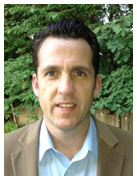 Brian Hendren, Senior RF and Microwave Applications Engineer, Tektronix Component Solutions takes over the Tek Talk blog and discusses prototyping for success:
Brian Hendren, Senior RF and Microwave Applications Engineer, Tektronix Component Solutions takes over the Tek Talk blog and discusses prototyping for success:
The prototype phase plays a critical role in the development of advanced RF/microwave components and assemblies. For design and process engineers, this phase is all about learning how the part performs and gaining insight for building the final product. Like many things in life, work and business, good communication is paramount to success, and it is critical that the design and process engineering teams work cohesively to capitalize on the opportunities for learning that prototyping provides.

